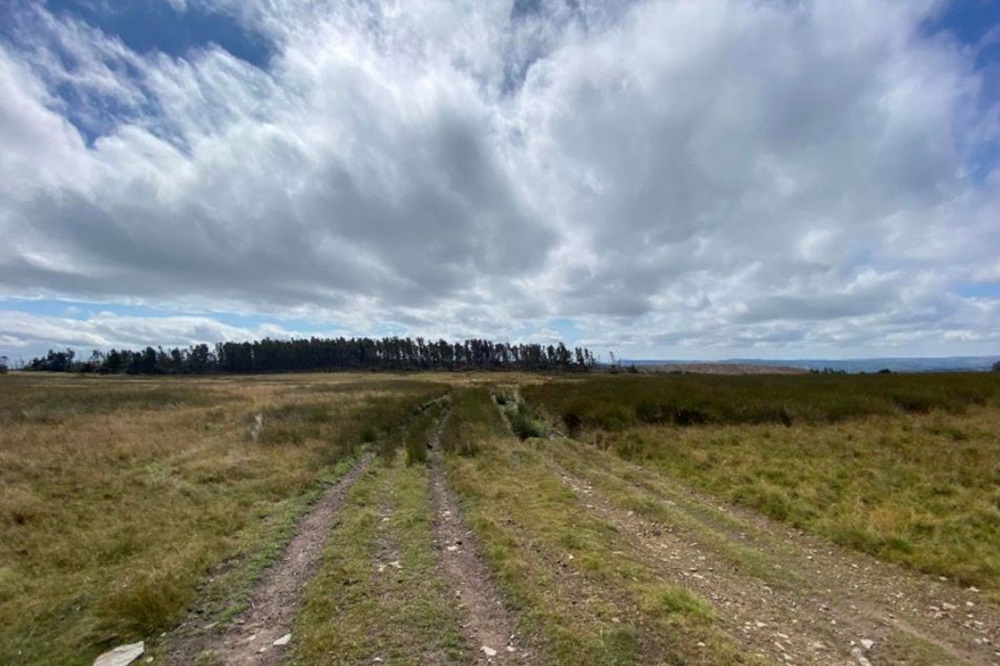Report details negative impacts of mountain windfarm plans

Twm Owen, local democracy reporter
One of two councils straddled by a windfarm planned for a mountain site, has produced an assessment detailing several potential negative impacts of the proposals.
A wind farm planned for a mountain and which would stretch across two Gwent boroughs could have a number of potential negative impacts, an assessment has found.
An examination of plans for an eight-turbine development at Mynydd Llanhilleth by Torfaen Borough Council’s planning department has identified up to eight potential negative impacts should it go ahead.
They range from potential noise issues impacting nearby residents and the visual impact of the turbines – that would measure up to 180 metres to the tip of their blades – to the possibility upgraded access routes at Llanhilleth Common could encourage more off road vehicles to use the area.
The report also highlights that the proposed wind farm is just one of a number planned for the Torfaen and Blaeanau Gwent areas and states: “The cumulative effect of other wind farm developments that have been approved or may come forward in the near future raises concerns.”
Report
Members of Torfaen’s planning committee will be presented with the report when they meet, at the Civic Centre in Pontypool, on Wednesday, January 10 to consider the application for the Llanhilleth wind farm that has been made by the Pennant Walters firm.
It’s claimed construction, which could start in 2025 and last for 22 months, would create hundreds of jobs, though there would only be four permanent full-time maintenance positions when the wind farm, which would be south east of Abertillery and east of Llanhilleth, is operational.
However councillors aren’t able to decide the application – which is intended to generate 34 megawatts of electricity which is enough to power 21,500 homes – as it is considered a development of national significance.
As a result the application will be examined by independent inspectors Planning and Environment Decisions Wales (PEDW) which will complie a report and make a recommendation for a Welsh Government minister on whether they should approve or reject the application.
Only one of the turbines is planned for an area the Welsh Government has already assessed as suitable for wind turbines, with the others to be sited north and east of that boundary.
Local impact report
Torfaen must produce its local impact report, for PEDW, by January 17 setting out, based on factual information, what the council considers the likely impacts will be.
Those include the concerns related to views of the upland areas of Torfaen and Blaeanau Gwent with other wind farms proposed at Mynydd Maen and Trecelyn, Mynydd Carn y Cefn and Manmoel.
That could “alter the landscape characteristic of open unbroken skylines along valley ridges” according to the council, which is also concerned at a “proliferation of turbines” in what the Gwent councils have designated the Eastern Uplands and Western Uplands Special Landscape Areas.
Torfaen said the “overall cumulative impact” would be negative and that the Llanhilleth wind farm would “have a negative, albeit reversible visual impact, on two of the eight” Special Landscape Areas within the Torfaen”.
Mitigations have been suggested by the developer, but the council has said it hasn’t yet had enough information so it “must conclude that there would be an adverse impact”. It also hasn’t had enought informtion to assess the impact on protected species so has concluded the the ecological impact is likely to be “negative, at best, neutral”.
The applicant’s environmental impact assessment has identified 20 properties that would be affected by noise. The noise would be above the acceptable limit at six properties during the daytime, but only one at night.
Unclear
However Torfaen has said while the applicant has proposed a condition to reduce noise to acceptable levels it is unclear if this could be achieved, including that people could use their gardens.
The council is satisfied with how it is planned to deal with shadow flicker from the turbine blades.
The other negative impacts identified are the potential that the nearby Tirpentwys Quarry wouldn’t be able to be brought back into use, should plans come forward, and the issue of off-road vehicles using the improved tracks, though the council acknowledges there is “no objective evidence” to support the theory.
The council has also accepted the environmental impact statement’s assessment that the wind farm would not have an adverse effect upon the outstanding universal value of the Blaenavon World Heritage Site.
The application also covers a proposed substation and underground power cables and grid connection and associated construction infrastructure.
Support our Nation today
For the price of a cup of coffee a month you can help us create an independent, not-for-profit, national news service for the people of Wales, by the people of Wales.








I walked along the coast in the Vale of Glamorgan on the weekend. Perhaps they should site wind turbines there and leave the valleys alone for a change.
Very windy vog coast, close to population and the old power station already a distribution hub. Makes a lot of sense. Won’t happen though. The people there will object strongly to what has happened to the likes of Gilfach Goch and Tonyrefail.
Hate wind farms. They are ugly, very noisy and produce no electricity except when its windy. Very polluting in manufacture and high maintenance too as the blades constantly break.
Its a bandwagon